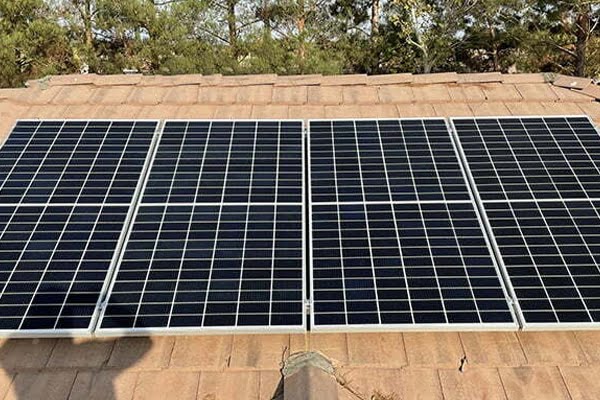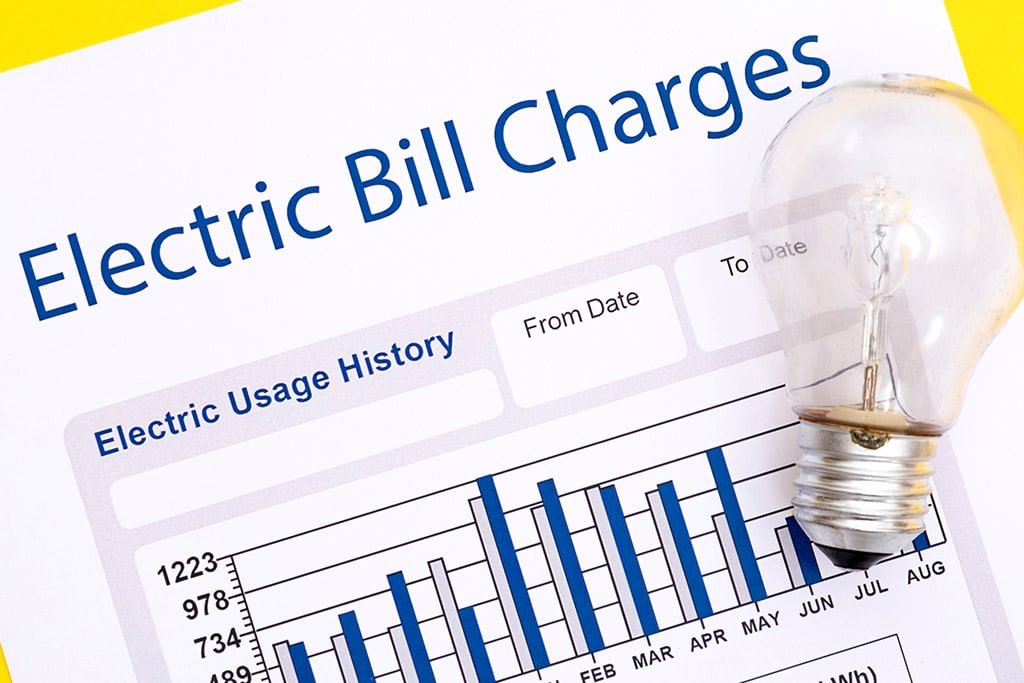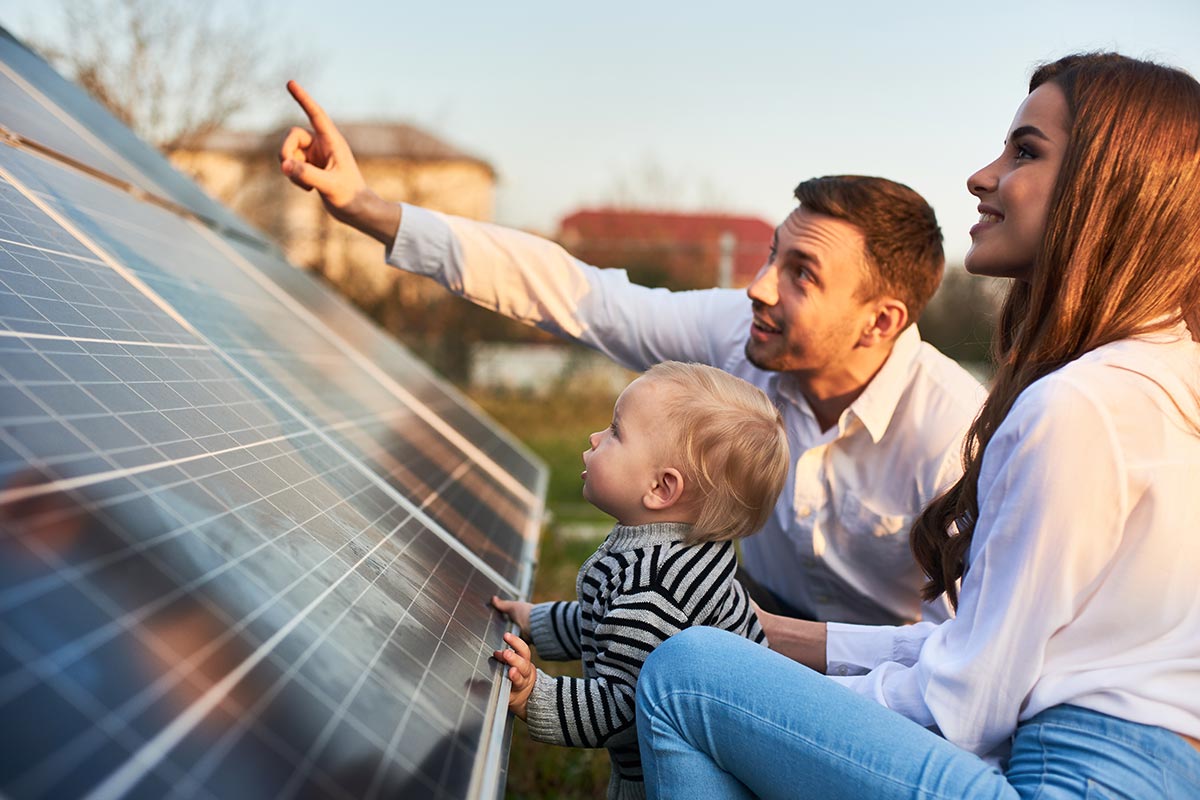Solar power systems are a great option for homeowners who want to lower their electric bills and reduce their carbon footprints. They can also have higher home values. These benefits come with substantial installation and maintenance expenses, and the magnitude and extent of the gains may vary from one house to the next.
However, there are tools that can help. LA Solar Group offers a calculator that quickly shows you the costs and savings associated with a solar power system. It is available in all 50 states. If you’re new to solar energy or want to learn more about the cost model, calculators like these are a great place to start.
The size of your system is also important. The theoretical electrical output potential of a solar panel is expressed in watts. The “capacity factor”, which is the average output for PV systems, is between 15% and 30%. A 3 kilowatt hour 3,942 kWh/year or about one-third the average household’s electricity consumption.
You can predict the amount of solar energy savings per year by knowing upfront how much a solar panel system will cost and how much energy it will produce, along with how much excess energy produced to send back to the electric grid tied solar system.
Solar Panels Generate Electricity
Photovoltaic (PV), or solar panels, absorb sunlight and convert it into electricity. They are usually placed on the roof of a home. The panels convert the sunlight into direct current energy (DC), which is then transported inside the house to an Inverter. This in turn converts it into alternating current energy (AC), which flows through the electrical panel, powering all appliances. If you use more electricity than the panels produce, any excess electricity will be sent to the grid.
A PV cell is basically a sandwich consisting of two pieces semi-conducting materials such as silicon. The ‘photovoltaic phenomenon’ is when light interacts with silicon cells. This causes electrons to move and creates an electric current.
How Do Photovoltaic Cells Work
Two primary technologies can harness the sun’s energy and convert it to electricity. Photovoltaics (or PV) is the first and most well-known. These panels are what you see on rooftops and in fields. Photons from the sun are absorbed by solar panels. This creates an electric field that allows electricity to flow. Find out more about PV.
Concentrated solar power (or CSP) is the second technology. Concentrating solar power, or CSP, is a technology that is used in large power plants. It is not suitable for residential use. Mirrors are used to reflect and concentrate sunlight onto receivers, which collect it and then convert it into heat. This can then be used for electricity production. Find out more about CSP.
How Does the Solar System Work?
While solar panels can be used in any climate, some rooftops might not be suitable due to tree cover or age. Rooftop panels might not be the best option if there are trees nearby that shade your roof. It is important to take into account the size, shape, as well as slope, of your roof. Solar panels work best on south-facing roofs that have a slope between 15 to 40 degrees. However, other roofs might be suitable. It is important to consider the age and lifespan of your roof.
You can still get solar energy if your roof isn’t suitable or your home doesn’t have solar panels. A shared, on- or offsite solar array can benefit multiple people. This is called community solar. The costs of purchasing and installing a solar power system are split among the participants. They can each buy into the system at the level that suits their budget.
How Solar Power System Works
Solar panels harness the sun’s energy for electricity generation. Solar cells react with the incoming sunlight to produce an electrical current via the “photovoltaic effects”. This article will explain how solar panels generate renewable energy for your home.How To Use Solar Panels During Power Outage
Photons reach many solar cells, and create an electric current for enough solar energy for generating power. Hire us as your solar company to make sure we analyze your utility bills to determine how much grid power your utility meter is using, thereby enabling you to save money and help prevent a power outage by having your solar panel system work .
They come from the sun. The sun’s constant nuclear fusion reactions create solar energy. The sun’s nuclear fusion process involves protons, which are basically the same as hydrogen Atoms, colliding and fusing under extreme pressure and temperature to make helium. This reaction produces a lot of energy, plus more protons, and is constant in the core sun. It creates over 500 million tons per second of hydrogen atoms.
What is the result? The result? EMR comes in many forms. The sun emits all types of EMR and these are carried to Earth in the form photons.
How Do Solar Panels Generate Electricity
A solar panel generates electricity by emitting photons or particles of sunlight that knock electrons from atoms. This electron flow is called electricity. Solar panels capture it and convert it to usable electric current. This is known as the photovoltaic process, and it is the fundamental chemical and physical process that underlies most of the solar technology.
How Do Home Solar Panels Work
Photovoltaic effects are the key to the science of producing electricity from solar panels. The photovoltaic effect was first discovered by Edmond Becquerel in 1839. It is a property of certain materials (known also as semiconductors) which allows them to produce an electric current when exposed sunlight.
Solar cells are the pieces that make up a larger panel of solar electricity. The element silicon (atomic #14 of the periodic table) is the most common material used to make solar cells. Silicon, a non-metal semiconductor, can absorb and convert sunlight to electricity. It is also used in nearly every computer on the globe. There are many types of semiconductors that can be used in solar cells. However, silicon is the most popular, being used in 95% all solar cells currently manufactured. Two main semiconductor materials are used in thin-film solar panels production: copper indium gallium dielenide and cadmium-telluride.
Photovoltaic cells are made up of two layers silicon. Each layer is “doped” to create an electrical field at the junction. The electric field causes electrons to flow out of the junction and into the solar cell, creating an electrical current. To create the positive and/or negative sides of a photovoltaic cells, boron and phosphorus are often used as doping agents.How Does A Solar Inverter Work
A solar inverter is a device that changes the direct current (DC) output of a photovoltaic (PV) solar panel into an alternating current (AC) that can be used by most appliances and devices in your home.
- DC electricity produced by PV solar panels is converted by the inverter into AC electricity
- this power can then be used to power your home’s lights, appliances, and electronic devices.
- The inverter also regulates the voltage and frequency of the AC electricity produced by the PV solar panel, so that it is compatible with the public grid.
- Solar inverters are typically located on the outside of your home, near your solar panel array.
- Most solar inverters are connected to the public grid, which allows you to sell any excess electricity that your PV solar system produces back to the utility company from the multiple panels producing energy efficiency.
The metal plates at the ends of every solar cell capture the electrons that are pushed out by an electric field and then transfer them to the connecting wires. The electrons are now flowing as electricity through the wiring of a solar inverter, and then throughout your house.
Although silicon is the most widely used semiconductor in solar panels worldwide, there are other options available in new and emerging solar products.
Thin-film solar cell are a broad category of solar cells that are made from light and flexible materials. There are four main types of thin-film solar cell chemicals: Amorphous Silicon (aSi), Cadmium Telluride, Copper Indium Gallium Selenide CIGS and Gallium Arsenide. These cells have light-absorbing layers that are 350 times smaller then silicon cells. This is why they are called “thin-film”.
Organic solar cells, a type of thin-film solar panel that uses carbon-based materials to make a semiconductor, are an entirely different kind. These organic photovoltaics are sometimes called “plastic solar cell” or “polymer sun cells”. They are made by dissolving organic chemicals in ink and printing them onto thin, plastic materials.
Perovskite solar cell is a third type of thin-film solar cell made from perovskites. This class of man-made materials has a unique crystallographic structure which makes them extremely efficient at converting light photons into usable electricity. Perovskite solar cells are made using “solution processing”, the same process used to print newspapers.
The panel’s glass casing provides protection and durability for the silicon PV cell. Solar panels are protected from heat dissipation as well as humidity by having an insulation layer underneath the glass. Insulation is essential because temperature increases can cause a decrease of efficiency and lower panel performance. The anti-reflective coating on solar panels increases sunlight absorption and allows for maximum sunlight exposure.
There are two types of silicon solar cell cells: monocrystalline or polycrystalline. Monocrystalline cells contain a single silicon crystal while polycrystalline cells have fragments of silicon. Monocrystalline cells have more electron mobility and are therefore more efficient than polycrystalline. However, they are more costly.
Although generating an electric current is the first stage of solar panel operation, it’s not the end. This is how solar panels systems produce usable electricity for your house:
The solar cells in each panel generate electricity by doing the heavy lifting, as explained above. Your solar panels generate an electric current through the photovoltaic process.
When DC electricity passes through your solar converter, it is converted and create ac electricity. You can also equip your inverter with transformers to regulate the voltage of AC and DC circuits.
As the sunlight hits your solar energy system, energy production is generating electricity for your home. The AC energy converted by solar inverters is transferred to your home’s electrical box as the electrons flow. The electricity is then distributed throughout your home to all outlets so that any device you plug in can use it.
Grid-tied solar systems can be connected to the power grid so electricity can flow both to and from them. This can make it possible for excess energy from your panels to earn you money. Net metering is a policy that allows you to receive credits from the power network when you send electricity back. This makes electricity more affordable. Find out more about net metering.
How Do Solar Panels Work With Electric Company
Your solar system will likely provide the majority of your electricity, provided it is properly sized. What happens if the sun doesn’t shine on cloudy days or at night? Many homeowners are still connected to grid electricity to have access to another source of electricity. This means that their solar system is tied to the grid. If you don’t have a solar plus-storage system, your solar panels will not work unless you are connected to the grid. This is because solar panels aren’t meant to generate enough electricity to power a home.
How Does A Solar Charge Controller Work?
A solar charge controller is a device that helps to regulate the charging of batteries from solar panels. It does this by controlling the amount of current that flows from the panels to the batteries. Too much current can damage the batteries, so the controller ensures that only the right amount of current is allowed to flow.
There are two types of solar charge controllers: MPPT and PWM. MPPT controllers are more efficient than PWM controllers, but they are also more expensive. PWM controllers are less efficient but cheaper, so they are a good choice for budget-conscious consumers.
How Do Solar Panels Work Step By Step
Solar panels are devices that convert sunlight into electricity. They are also known as solar photovoltaic (PV) cells.
The basic principle behind how they work is pretty simple: When light strikes a PV cell, it causes electrons to be knocked loose from their atoms. If you can find a way to collect these free-flowing electrons, you can generate an electric current. And that’s exactly what solar panels do. It creates ac electricity from the entire solar system.
Most PV cells are made of silicon, a mineral that is found in sand and that makes up a large portion of the Earth’s crust. When pure, silicon is a dark gray metalloid with a metallic luster that looks like a miniature carbon copy of a diamond. However, when it is exposed to sunlight, it produces an electric field.
When silicon is “doped” with other materials, it becomes a solar cell. Doping simply means introducing impurities into the silicon. When phosphorus is added to the mix, it creates what is known as n-type silicon (the n stands for negative). When boron is used, the result is p-type silicon (p stands for positive).
N-type and p-type silicon are the two types of semiconductor material used in virtually all modern PV cells. Semiconductors are materials that can conduct electricity under some conditions and insulate under others. In a solar cell, the n-type and p-type layers are placed together in what is known as a p-n junction.
When the p-type and n-type silicon are placed together, they form an electric field at the junction between the two layers. This electric field acts like a one-way gate for electrons. Electrons can flow freely from the n-type layer to the p-type layer, but they cannot flow back the other way.
As sunlight hits the PV cell, photons knock loose electrons from their atoms in the silicon crystal. The electrons flow through the electric field to the p-type side of the cell, where they are collected in wires that run along the surface of the cell. At the same time, holes are created in the n-type side of the cell.
The flow of electrons creates an electric current, which can be harnessed to power electrical devices. The holes flow in the opposite direction of the electrons and eventually recombine with them on the n-type side of the cell. This process creates what is known as a “photovoltaic effect,” which is how solar cells convert sunlight into electricity.
To understand how a solar charge controller works, it is first necessary to understand how solar panels generate electricity. Solar panels contain photovoltaic cells. When sunlight hits these cells, it causes them to generate an electric current. This current is then sent to the batteries to be stored.
The amount of current that is generated depends on the intensity of the sunlight and the size of the panel. The more sunlight that hits the panel, the more electricity it will generate. The size of the panel also matters. A larger panel will generate more electricity than a smaller one.
Solar panels can generate a lot of electricity, more than the batteries can store. That is why it is necessary to use a solar charge controller. The controller regulates the flow of electricity from the panels to the batteries, making sure that the batteries are not overloaded.
A solar charge controller is a great way to get the most out of your solar panels. It ensures that your batteries are charged properly and prevents damage from overcharging. If you are looking for an efficient and cost-effective way to charge your batteries, a solar charge controller is the way to go.
What happens if you don’t have power? Your solar panels are installed but your system doesn’t seem capable of producing any energy.
This problem, also known as zero power output, can be caused by a damaged or faulty inverter, faulty charger controller, or your solar panels simply not working.
Generators create AC electricity
Make sure your inverter is working. This is a power adapter that converts the energy from the sun to a format that can be used by home appliances.
If the inverter still isn’t working, contact the company that sold it. The same applies to your charge controller.
You may also have nearby trees that cast shadows on your solar panels during the day and overheating. This can be fixed by adding more energy with additional modules, and solar battery storage.
If you have solar panels installed at your home, you can still switch to electricity and gas.
Contact LA Solar Group today for more solar energy system information.




